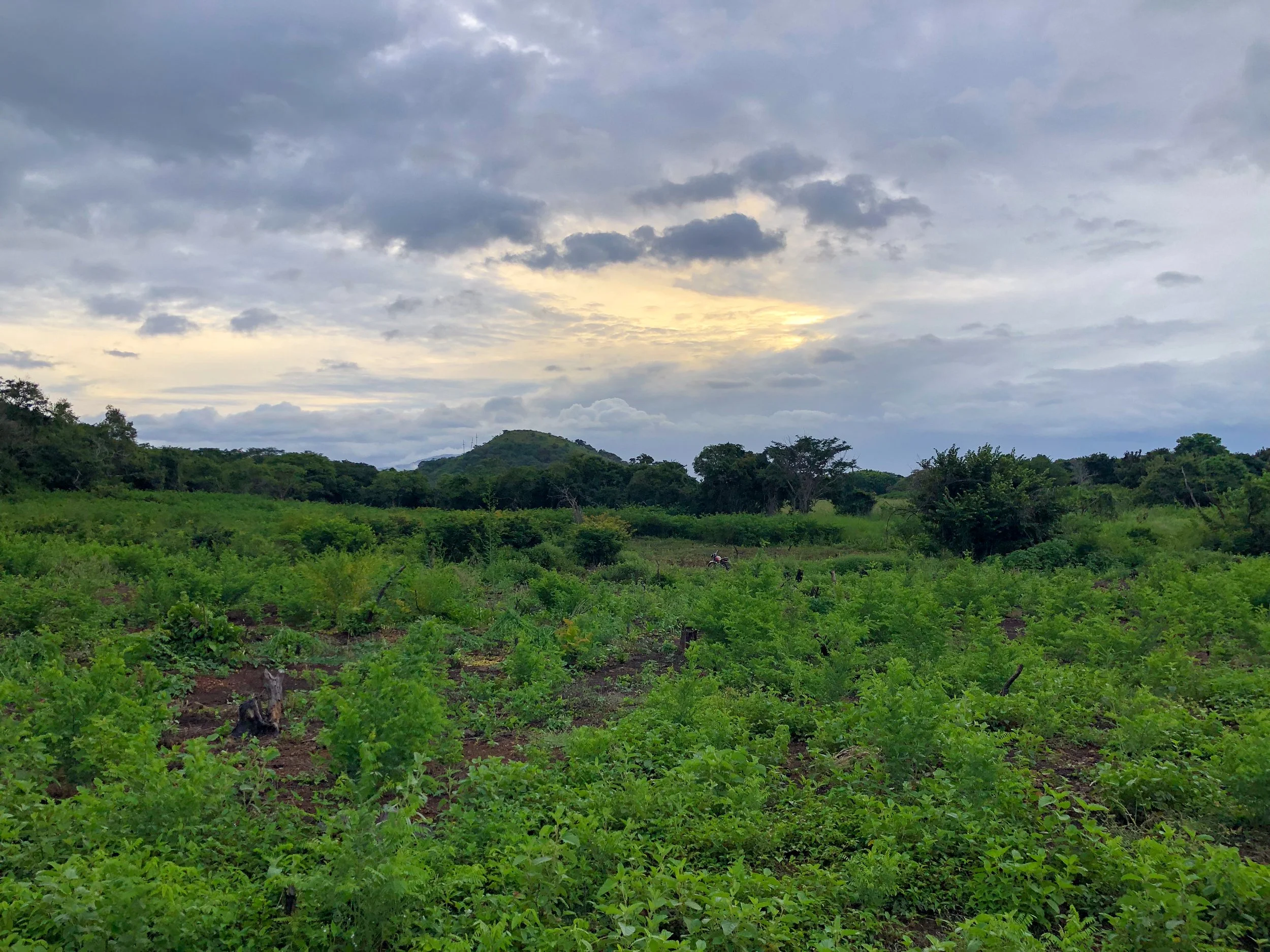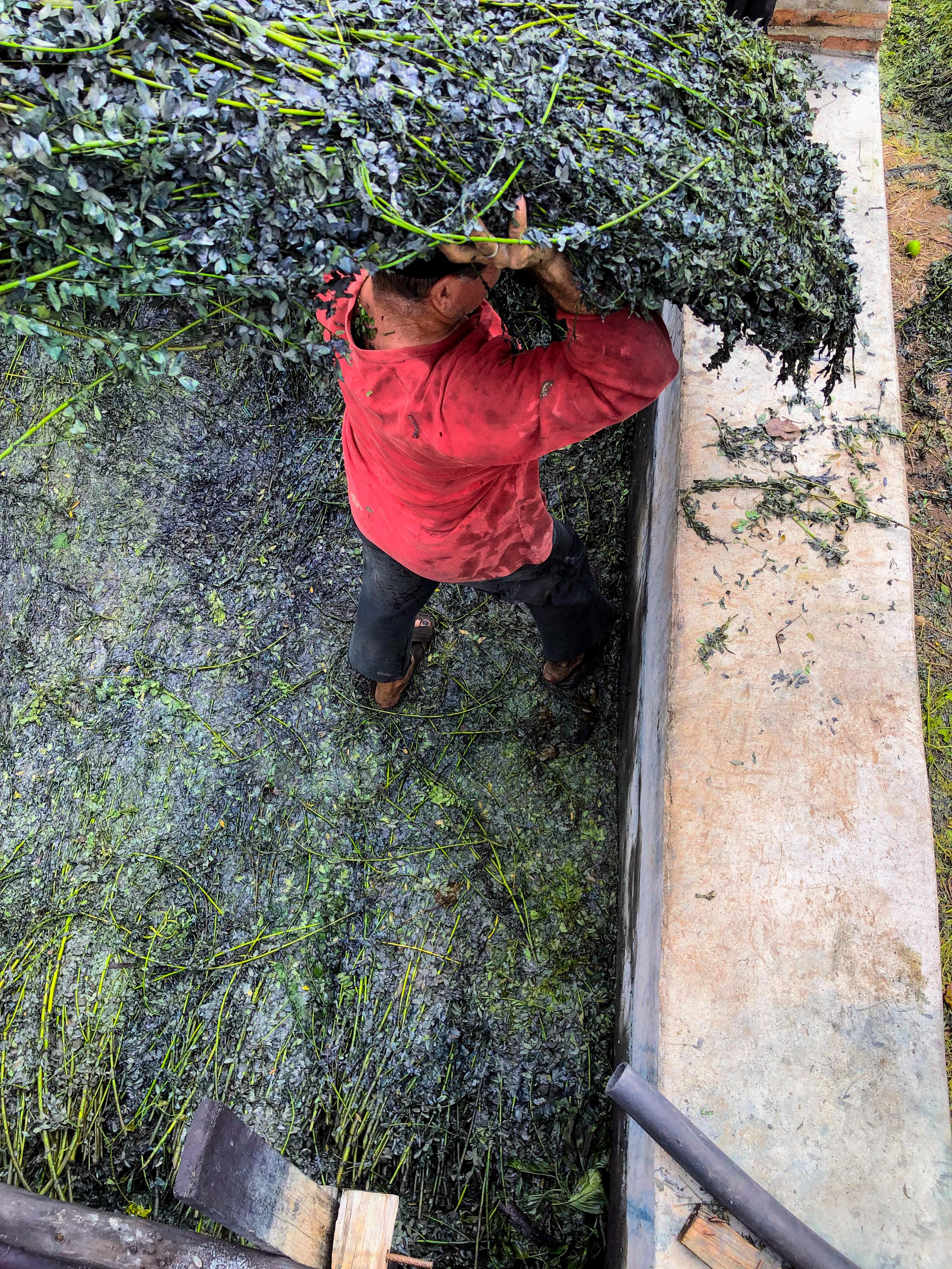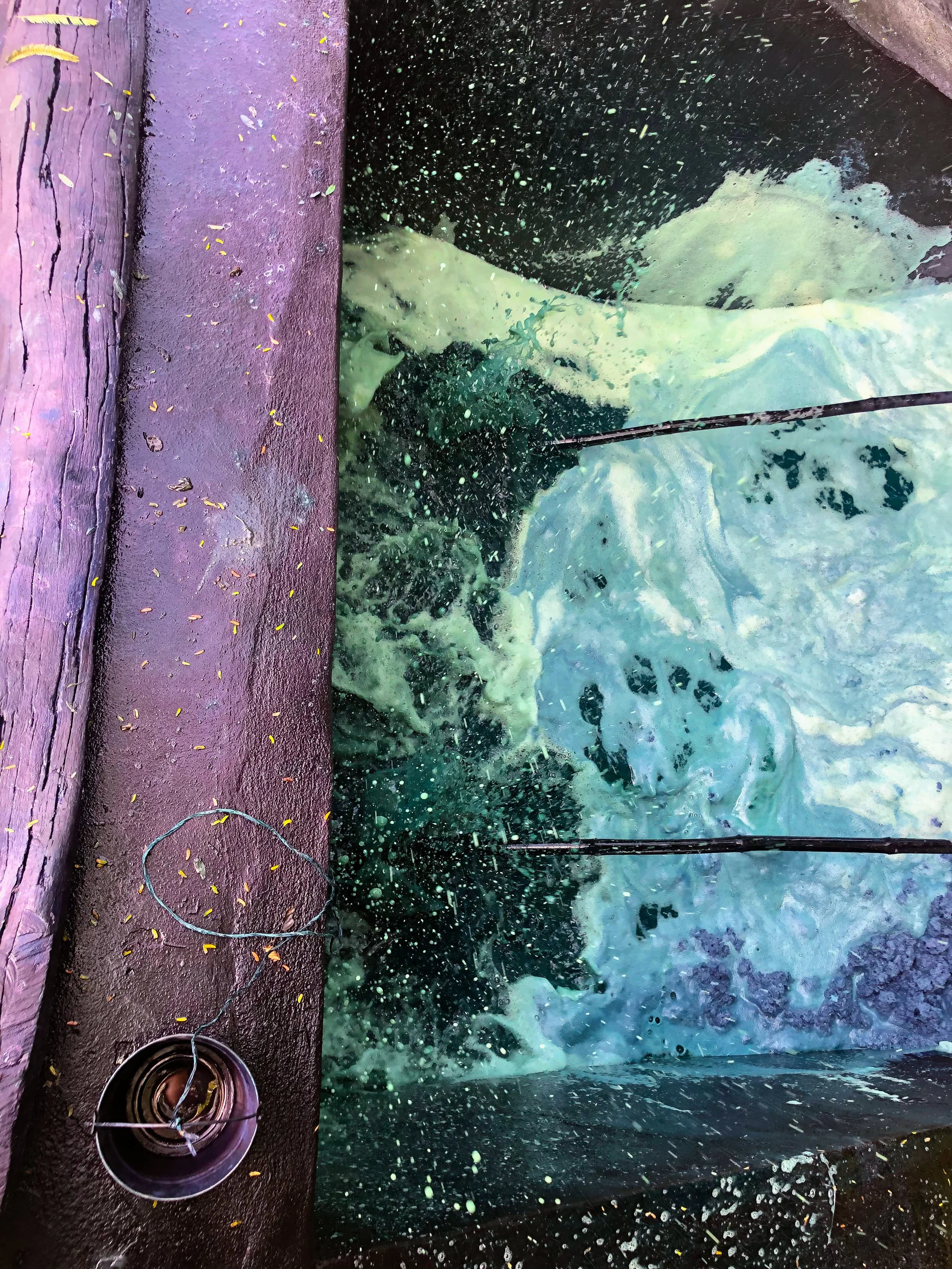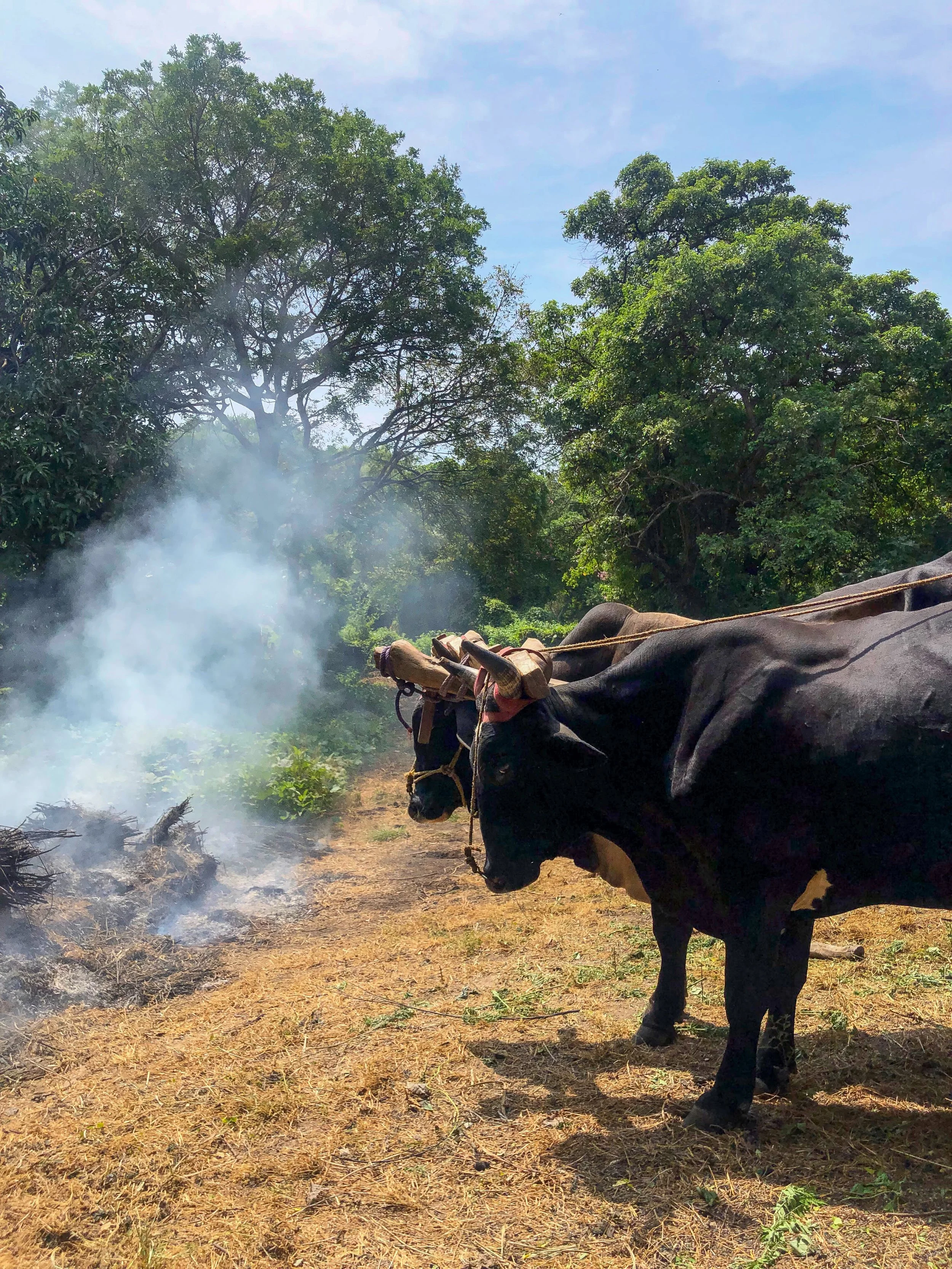Indigo in Santiago Niltepec
Abigail Rothberg began her relationship with indigo in 2019 while living in Oaxaca and Guatemala. Indigo was the first of many natural dyes and fibers she has explored across Central and North America, and it remains the most beguiling to her. Currently, based once again in Oaxaca, Abigail offers indigo workshops with Texere (upon request) as well as curated explorations of the natural dyes and fibers found in Oaxaca’s rural communities.
A thick heat is the first to welcome you to Santiago Niltepec, the unassuming town in the Itsmo of Oaxaca where indigo is naturally produced. The town is cleanly laid out with wide streets that are drenched with sun and are, therefore, mostly empty during the day. In the evening, Niltepec shows signs of life. Residents come out to eat, to walk, to greet each other—there is a soft flurry of activity.
While the heat is something to contend with, it is any indigo-lover’s friend because the bold sun and saturated air help indigo plants grow tall, up to 2 meters, and bushy, with leaves full of indican—the blue that lives invisibly within the green leaves. Niltepec is one of the few places in Mexico where indican is extracted, and without any machinery or chemicals. And anyone who has worked with indigo, or wants to, will deepen their appreciation for the dye after a two- or three-day visit there. Indigo’s deep and rich blue color, we all know, but the process to release the magical blue from the green leaves of the indigofera tinctoria plants is just as mesmerizing as an indigo-dyed fabric.
Indigo has been around for a long time in the Itsmo—the plants grow wild in patches throughout the area. It is likely that the Spanish expanded indigo production in the area since Niltepec sits on the old trade routes, but the history of indigo began long before the Spanish arrived. One añilero told me that the Náhuatl name “Niltepec” translates to “cerro de añil” or “indigo hill.” But nowadays, when you come to Niltepec, you can see why most residents there don’t know much about indigo production. Indigo does not announce its presence there. Indigo fields surround the town but often require a drive down dirt roads to access them. Unlike the mountains around the Oaxaca Valley that are neatly peppered with agave, indigo blends into the Itsmo’s verdant landscape. Its green hue is just one of many in a region thick with trees, making it easy to overlook from a distance.
To visit Niltepec, you can go during the annual festival, “la féria cultural del añil.” I have been told that this year the festival will take place on a weekend in mid-to-late September. (In previous years, it was held in August and July.) August (when plants from previous years are usually harvested) and September (and into early October) are the height of production season. The annual festival guarantees that you will see the process and meet the producers, as well as other interested travelers who come from all over Mexico to observe the process (speaking Spanish, or having someone with you that does, will significantly improve your experience). Too, the festival connects the local community to the indigo process. The first festival, held in 2022, was the first time many Niltepec residents witnessed indigo production and dyeing. It brought together local dyers and producers to exchange knowledge, share perspectives, and deepen their understanding of their shared craft. This spirit of local participation is part of what makes the festival special. There is food, festivity, dance, and craft showcased from the surrounding area. You’ll get to taste local garnachas, see traditional and modern takes on the iconic Itsmeña indumentaria that comes out of San Blas Atempa, and see varied work from Itsmeñxs artists. If you truly want to get to know the indigo process, prepare to wake up early, maybe as early as 3:30am to head to the pilas to see the fermentation at its best moment.
Harvesting añil is also done early. Work begins around 4:00am, in the cooler hours before the sun comes up. I highly recommend seeing the harvest. The vibrant green of the indigo against the trees is a sight that will help lift your eyelids as the dawning sun arrives. Time in the fields helps you get to know the miraculous source of indigo dye. There, you’ll encounter the distinct smell of the indigo plant as its leafy stems are cut and gathered. You may grow to love this smell, as I have, because it will meet you each time you walk up to the pilas or into the fields. It’s a scent that lets you know that you’re in the company of indigo.
Other than the fields where indigo is grown, the pilas are the most important area for indigo production. Pilas are large pools, many of them hundreds of years old, where the indigo plants are left to ferment in water. Once the fermentation reaches its ideal point (something only an experienced añilero can determine) the water is agitated for hours to separate the blue sediment from the water. In Niltepec, the pilas are tucked away, strategically placed along the winding river. There are many crumbling pilas that are no longer in use—those that are maintained are done so by the producers who share them during production season. Once you start to harvest your indigo, you process all of it, 96 large bundles of stems and leaves each day until you have harvested your whole crop. Indigo has to be processed the same day it is harvested so that you don’t lose any indican from the leaves that dry quickly once cut.
You can always visit Niltepec outside of festival dates, but it’s best to speak with an añilero before you go. Since there is no irrigation in Niltepec, producers rely solely on the rainy season (from May-September) to water their crops. As the indigo plant is dependent on rain, it is difficult to know exactly when it will be harvested. Añileros usually know about a week before they are going to harvest. Another thing to note before you go is that Niltepec is a small, rural town, so accommodation and food options are limited. During your visit, it is helpful to be prepared for small-town life. In other words, don’t expect luxury accommodation, diverse dining options, or lattes in the morning. The true draw of Niltepec is the stunning, lush countryside, the slower pace, and, of course, the indigo.
If you would like to visit Niltepec with us in September, Mysa Explorations and Texere will be offering a 4-day field trip in late September (exact dates to be determined). Please contact us to join the mailing list for updates about this trip.






